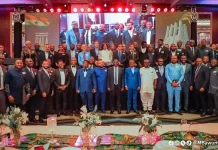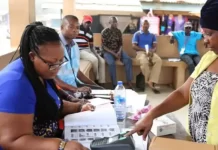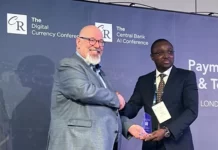
In India’s vast hinterland, life still rises and sets with the Sun. If solar power can be made to do what grid power has not been able to, the advantages are obvious and many — children can study well, women can organise their work better, people need not choke on kerosene fumes.
There are, other less realised but critical advantages too — people can see, and avoid, scorpions and snakes or a small refrigerator can store life-saving drugs, especially antidotes for snake-bites. After all, snake bites claim a staggering 50,000 lives every year, mainly in India’s hinterland.
The solar power revolution is shining bright in India thanks to the vigorous push it has received from the Federal and state governments, and the enthusiastic response of the private sector.
Nikhil Jaisinghania, a US-born entrepreneur who was among the earliest to spot the “30 per cent return” business opportunity, began solar-powering villages in Uttar Pradesh, India’s largest province, in August 2010. His model was simple: rig-up solar panels in a village, run wires into houses, charge households a weekly fee not much more than what they would have paid for kerosene to burn lamps, and pocket a reasonable surplus.
The model was easily replicable, but that did not worry Nikhil; there are some 300 million people in the country still without access to even this basic electricity. No wonder, he told The Guardian that he hoped to bring solar power to a hundred thousand homes by 2016.
Nikhil is making progress but it is slow. As of this September, his company, Mera Gao Power (which translates to ‘My village electricity’), had covered 20,000 households across 1,500 villages in northern India. The gap between Nikhil’s ambitious target and achievement is the cost of doing business in India.
From identifying, recruiting and retaining quality talent, holding costs on a tight leash, keeping a variety of local officials in good humour, to managing weekly collections, Mera Gao Power has had to do quite a bit of learning, on the run.
No doubt US-raised Nikhil underestimated the difficulty of the business terrain he was entering, but the idea itself is robust and, now in the post-learning-the-rope phase, Mera Gao Power should start to make money.
A solar-powered micro-grid is clearly a smart business solution to a climate-cum-economic problem. Every year, rural India spends billions of dollars (an estimate puts it at $60 billion) to burn carbon-dioxide emitting kerosene, causing disease and death — a point that is not lost on villagers. A few months back, a Delhi-based green think-tank
The Council for Energy, Environment and Water, studied ‘access to electricity’ in six Indian states and came up with a startling insight. Asked if they would want ‘regular’ (state-owned) grids or micro-grids, assuming both cost the same, 34 per cent of the respondents preferred the latter. “This is a promising find for the proponents of renewables,” says the report.

This, and the government’s renewables, push have spawned a number of start-ups like Mera Gao Power. Some have refined the idea to make the model viable — crucial to sustaining the interest of entrepreneurs. For instance, a company OMC has spotted a segment of the market which it believes is more paying — mini-grids with capacities ranging from 100 kW to 1 MW in contrast to the typical plant size of under 100 kW.
In the four years of its launch, OMC has put up 60 solar plants covering 1,800 villages, or 100,000 persons. Operating in somewhat bigger villages that are grid-connected but with unreliable supplies, OMC sells the bulk of its power to an anchor customer, typically a telecom tower, charging the customer a fee that ensures a 20 per cent saving on his present costs. OMC sells the ‘surplus’ electricity to village households for a monthly fee that can be as low as Rs 110.
What can the government do to help? There are several expectations. For one, it could earmark certain areas for solar micro-grids so that entrepreneurs and financiers won’t have to worry about what if of the government reaching cheaper electricity to that village some day. It could set up loan guarantee schemes to make it easier for banks to lend to micro-grid companies. The great thing is, no company is asking for subsidies.
“Make it easier for us to do business,” is all they are asking for. They are ready to ensure that every village gets the light to study and cook by, and of course, avoid snakes and scorpions.
M Ramesh
























